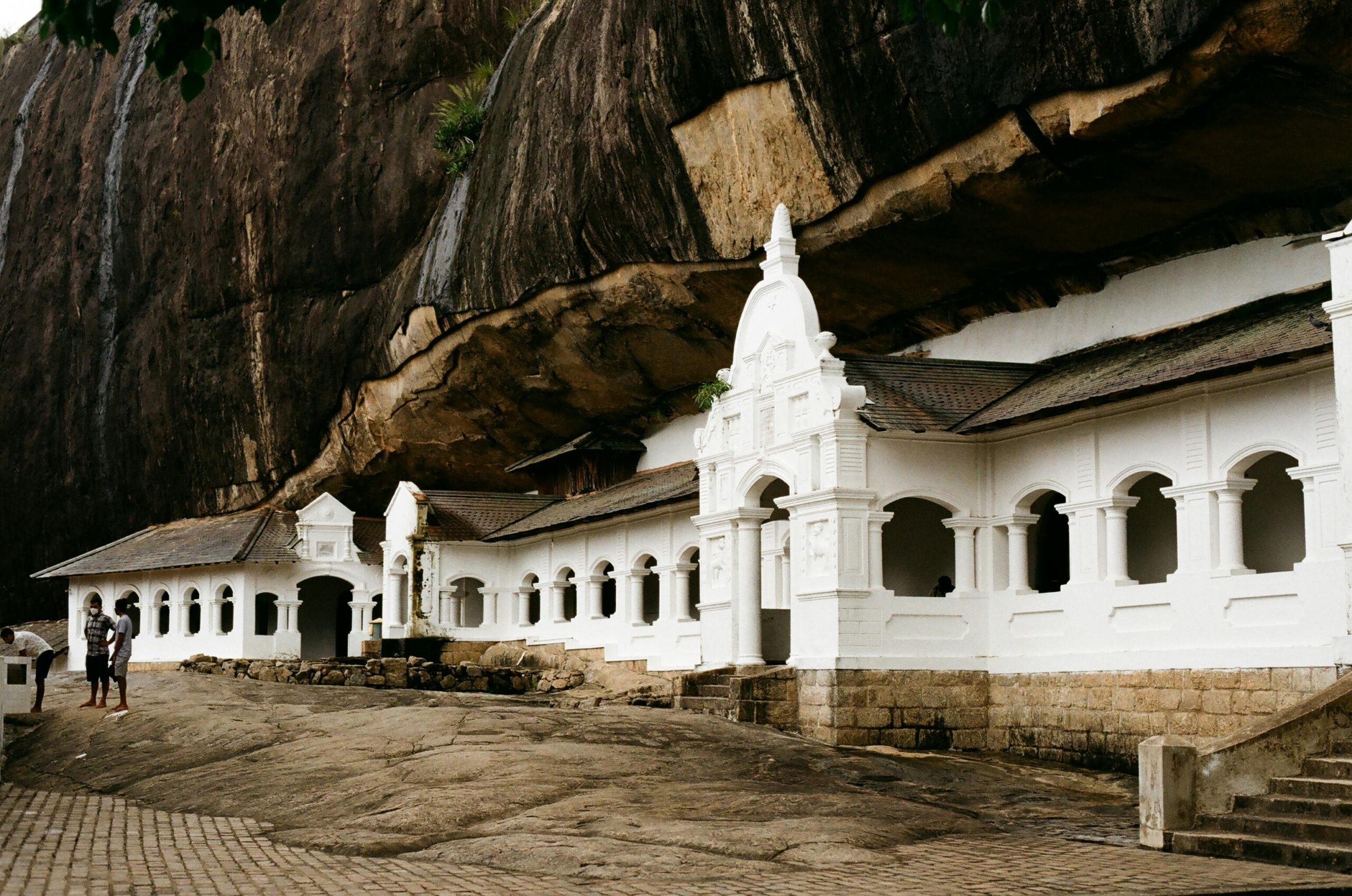Introduction
Dambulla Cave Temple, also known as the Golden Temple of Dambulla, is a UNESCO World Heritage Site. It is Sri Lanka’s largest and best-preserved cave temple complex. This sacred Buddhist site is located in the heart of the island. It has been a center of worship. Additionally, it has served as a place for meditation for over 2,000 years.
This historic and cultural marvel is carved into a massive rock towering 160 meters above the plains. It is home to over 150 Buddha statues. It also features intricate murals that depict Buddhist teachings. These artworks showcase Sri Lanka’s ancient heritage.
In this guide, we’ll explore:
✔ The history of Dambulla Cave Temple
✔ What to expect when visiting
✔ How to get there and the best time to visit
✔ Travel tips for an unforgettable experience
The History of Dambulla Cave Temple

Ancient Beginnings: A Refuge Turned Sacred Site
The origins of Dambulla Cave Temple date back to the 1st century BCE. King Valagamba of Anuradhapura sought refuge in these caves after South Indian invaders exiled him. He lived in the caves for 14 years. After reclaiming his throne, he transformed the caves into a magnificent Buddhist temple. He did this as a tribute to the monks who sheltered him.
Centuries of Expansion & Artistry
Successive Sri Lankan rulers expanded the temple complex, enriching it with:
🔹 Intricate murals covering over 2,100 square meters
🔹 More than 150 Buddha statues, some gilded in gold
🔹 Hindu deity figures, reflecting religious harmony in ancient Sri Lanka
During the 12th century, King Nissanka Malla gilded the interior of the caves, earning it the name “Golden Temple”. The Kandyan kings (17th–18th century) enhanced the temple with vibrant frescoes. They also added sculptures, many of which are still in pristine condition today.
A UNESCO World Heritage Site
Recognized for its cultural and historical value, Dambulla Cave Temple gained UNESCO World Heritage Site status in 1991. This designation solidified its status as one of Sri Lanka’s greatest architectural and spiritual treasures.
The Present-Day Dambulla Cave Temple

A Thriving Pilgrimage Site & Tourist Attraction
✔ An active Buddhist monastery with resident monks
✔ Daily religious rituals and ceremonies
✔ Thousands of visitors and pilgrims each year
Challenges & Conservation Efforts
Despite its excellent preservation, Dambulla Cave Temple faces challenges such as:
❌ Humidity & human activity affecting murals
❌ Overcrowding during peak season
❌ Flash photography damage (strictly prohibited)
To counteract these issues, Sri Lankan authorities and UNESCO have implemented strict conservation policies to ensure the temple’s longevity.
What to Expect When Visiting Dambulla Cave Temple

How to Get There 🚗🚆
📍 Dambulla is centrally located and well-connected to major cities in Sri Lanka:
✔ From Colombo: 148 km (3.5-hour drive)
✔ From Kandy: 72 km (2-hour drive)
✔ From Sigiriya: 17 km (30-minute drive)
✔ From Anuradhapura: 65 km (1.5-hour drive)
🚆 By Train: Nearest station: Habarana (then take a taxi/bus)
🚌 By Bus: Regular buses operate from Colombo, Kandy & Anuradhapura
🚗 By Private Car: The most convenient and comfortable option
Entrance Fees & Timings
⏰ Opening Hours: 7:00 AM – 7:00 PM (Last entry at 6:00 PM)
🎟 Entrance Fee: ~$10 for foreign visitors (prices may vary)
👕 Dress Code: Modest attire (shoulders and knees covered)
Exploring the Five Main Caves 🏯
Each cave is adorned with ancient murals, Buddha statues, and relics:
1️⃣ Devaraja Lena (Cave of the Divine King)
- Features a 15-meter-long reclining Buddha statue.
2️⃣ Maharaja Lena (Cave of the Great Kings)
- Houses statues of King Valagamba & King Nissanka Malla.
3️⃣ Maha Alut Viharaya (Great New Monastery)
- Displays Kandyan-era murals and a large seated Buddha.
4️⃣ Pachima Viharaya (Western Temple)
- Home to a meditating Buddha statue.
5️⃣ Devana Alut Viharaya (Second New Monastery)
- Includes images of Hindu deities & multiple Buddha figures.

Nearby Attractions
🌄 Sigiriya Rock Fortress – A UNESCO World Heritage Site, 20 min away
🏞 Pidurangala Rock – A hidden gem for sunrise hikes
🐘 Minneriya National Park – Famous for elephant gatherings
🏏 Rangiri Dambulla International Cricket Stadium – A must-visit for cricket fans
Best Time to Visit Dambulla Cave Temple ☀️
✔ December – April: Dry season, best for sightseeing
✔ May – November: Green landscapes but occasional rain
✔ Early mornings or late afternoons: Cooler weather & fewer crowds

Essential Travel Tips 📝
✅ Bring water – The climb to the caves can be exhausting.
✅ Wear comfortable shoes – Expect some walking and stairs.
✅ Follow temple etiquette – Remove shoes and hats before entering.
✅ Watch out for monkeys – Avoid feeding them as they can be aggressive.
✅ Respect the sacred atmosphere – Keep noise levels low.
Conclusion
Dambulla Cave Temple is not just an architectural marvel, but a living symbol of Sri Lanka’s rich Buddhist heritage. Whether you’re a history enthusiast, cultural explorer, or spiritual seeker, this 2,000-year-old temple offers a profound and unforgettable experience.
With ongoing conservation efforts, Dambulla will continue to inspire visitors for generations to come.
Plan Your Sri Lanka Adventure Today! 🌍
🇱🇰 Sri Lanka is calling! Let Sri Lanka Travel Paradise be your guide to this fascinating destination.
📢 Follow us for weekly travel updates & inspiration!
🔗 For more details, visit the Sri Lanka Tourism Official Website
